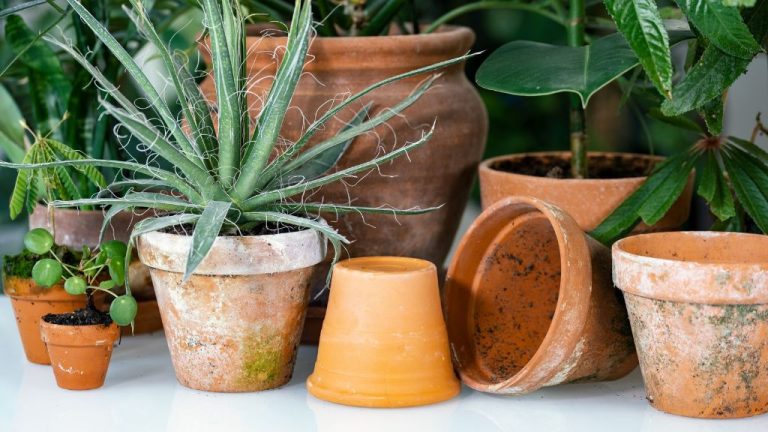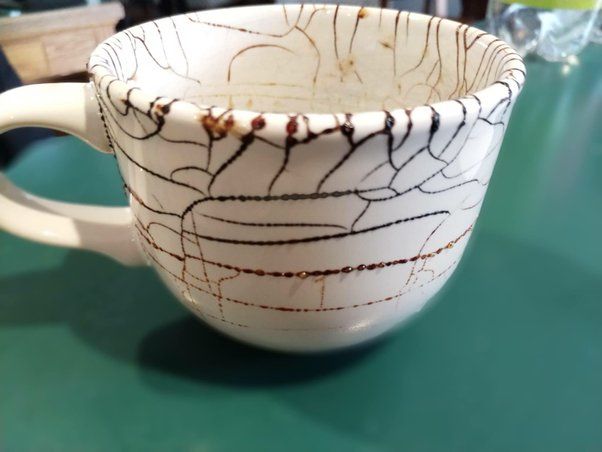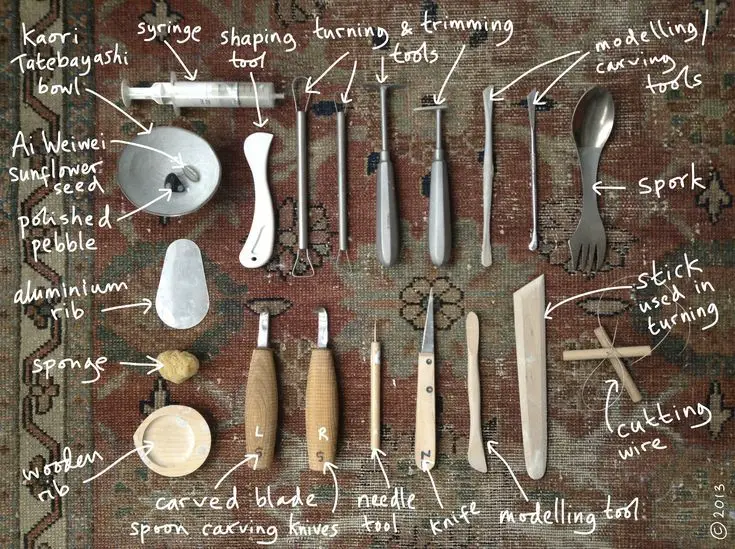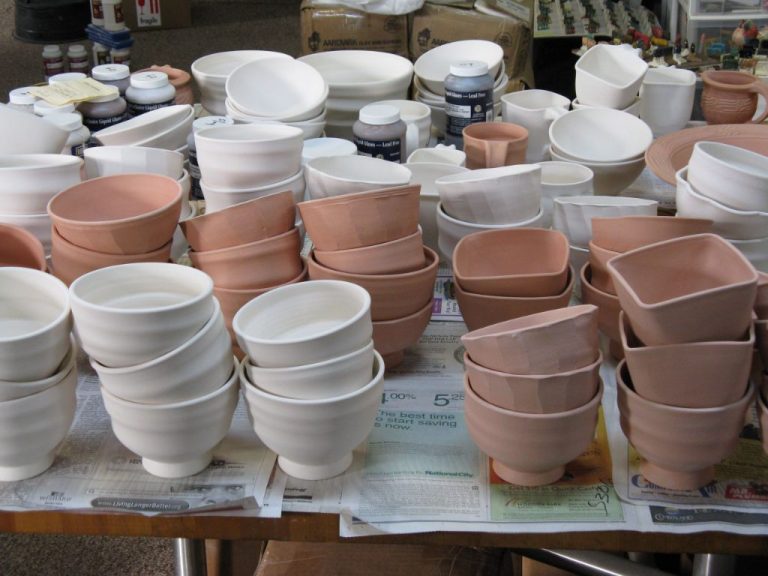What Are The Cons Of Terracotta Clay?
Fragility
Terracotta is known for being fragile and prone to breaking, chipping, or cracking easily, especially if not fired or dried properly. According to research, terracotta has “moderate mechanical strength but poor resistance to impact.”[1] The clay material must be handled very carefully to avoid cracks and damage. For example, archaeologists discovered thousands of broken terracotta warrior body parts when excavating Emperor Qin Shi Huang’s terracotta army in China.[2] The lifesize clay soldiers were created over 2,200 years ago but fractured into pieces over time due to the inherent fragility of terracotta.
Terracotta pottery and sculptures can develop hairline cracks during the initial firing process if the clay dries unevenly. Fragile thin parts like arms or legs often break. To prevent cracking, terracotta should be air dried for several weeks before firing in a kiln. Once fired, terracotta remains prone to chipping, cracks, and breakage if handled roughly or dropped.
[1] https://heritagesciencejournal.springeropen.com/articles/10.1186/s40494-022-00662-0
[2] https://www.nationalgeographic.com/science/article/141114-terra-cotta-warriors-qin-shi-huang-tomb-china-archaeology
Weight
Terracotta clay is very dense and heavy compared to other clays. According to the Clay Weight Chart by Expert Clay, terracotta clay can weigh between 15-30 lbs per cubic foot when bone dry.1 This makes terracotta items very heavy and difficult to move around or ship. For example, a 12″ terracotta pot can weigh over 15 lbs when bone dry, compared to only a few pounds for an equivalent ceramic or porcelain pot.2 The high density is due to the mineral composition of terracotta, which contains a high percentage of iron oxide. While the heaviness gives terracotta strength, it also makes the clay challenging to work with for large or complex shapes.
Porosity
Terracotta is a porous clay material that can soak up liquids easily, staining the material. According to the Digitalfire Glossary, terracotta clay bodies typically have around 3% porosity which allows absorption of water and other liquids, while still maintaining strength.[1] Unglazed terracotta pieces are especially prone to absorbing liquids through their porous structure.
The porosity of terracotta makes it great for plant pots, allowing excess water to seep through. However, the absorption can also lead to staining and difficulties with cleaning. Care should be taken to avoid frequent contact with liquids that could be absorbed into the porous terracotta material.
Shrinkage
All fired clays experience some degree of shrinkage from drying to firing. Terracotta experiences high shrinkage rates, typically between 8-15%, due to the porous nature and composition of the clay body. According to research, “As a clay is fired higher it shrinks more and more” (1). The high shrinkage of terracotta can lead to increased warping, cracks, or breakage as the clay body reduces in size during firing. Preventing defects related to shrinkage requires careful drying and firing procedures. Proper drying to release shrinkage prior to firing can help minimize stresses at high temperatures. Slow bisque firing and cooling cycles also help terracotta safely pass through critical phases where shrinkage occurs. High shrinkage is an inherent quality of terracotta clay that requires proper management.
(1) https://digitalfire.com/glossary/firing+shrinkage
Colors
One of the downsides of terracotta clay is its limited color palette. The natural clay has an earthy red-orange hue that can range from a light peach to a deep burnt umber. Unlike brightly colored glazed ceramics, the colors of unglazed terracotta are dependent on the composition of the clay and any mineral deposits it contains. As explained by Marrangoni Pottery, “Tuscan terracotta has always been available only as a red or rose color up until a few years ago. This beautiful rich red comes from high quantities of iron oxide naturally found in the clay” (source). While various hues are possible, they tend to be within a narrow spectrum compared to man-made glazes that can achieve any color. For those desiring vibrant greens, blues, purples, etc., the muted natural tones of terracotta may be disappointing.
High Firing Temperatures
One of the downsides of terracotta clay is that it requires extremely high firing temperatures in the kiln, typically around 2,000°F (Kiln Firing Chart). This is much hotter than other clays like earthenware or porcelain, which can be fired at lower temperatures around 1,800-2,200°F. Firing terracotta to these high temperatures consumes a lot of energy and can be costly for ceramic artists and studios.
Terracotta’s high firing range also requires more advanced kilns that can reach over 2,000°F without breaking down. Beginner ceramic artists usually start with lower temperature clays like earthenware that do not require as much special equipment. Working with terracotta limits the accessibility for new artists unless they invest in high-heat kilns.
Chemical Reactions
Terracotta clay can undergo chemical reactions when exposed to certain materials, which can damage the clay. According to the Royal Society of Chemistry, terracotta contains carbonates that decompose when fired, releasing carbon dioxide1. Additionally, Science magazine reports that terracotta clay often exhibits high surface acidity and can react with organic compounds2. Acids and other chemicals can react with the minerals in terracotta, potentially corroding or disintegrating the clay. Porous terracotta is especially vulnerable to chemical damage. Even exposure to saltwater can cause chemical reactions that weaken terracotta over time.
To prevent chemical damage, it’s important to avoid contact between terracotta and harsh cleaners, acids, alkalis, and saltwater. Coating the terracotta with an appropriate sealer can provide some protection. Proper care and avoiding contact with reactive substances will help preserve terracotta artworks and utilitarian objects.
Sources:
1. https://edu.rsc.org/feature/the-chemistry-of-pottery/2020245.article
2. https://www.science.org/doi/10.1126/science.235.4795.1473
Water Damage
Terracotta is very porous and absorbs water easily. If water seeps into the clay, it can cause the material to expand and contract. This makes terracotta vulnerable to cracking, especially if water gets trapped inside and freezes. According to this source, terracotta tiles used on a kitchen floor were badly damaged by flooding: https://terracotta.tilecleaning.co.uk/renovating-a-flood-damaged-terracotta-tiled-kitvchen-floor-in-gloucester/. The tiles had to be professionally cleaned, repaired, and resealed after the water exposure. This demonstrates how susceptible terracotta is to water damage. Moisture can seep in and cause extensive cracking or deterioration. Terracotta tile or pottery left outside and exposed to the elements is particularly at risk. Even a quick rain shower can leave permeable unglazed terracotta saturated. Without proper sealing and care, water damage can ruin terracotta over time.
Limitations for Complex Shapes
Terracotta clay has difficulties in crafting intricate or highly detailed shapes compared to other sculpting materials. The properties of terracotta make it better suited for simpler geometric forms rather than complex organic shapes.
According to Tuscanylux, “The shapes are simple. Terracotta can be modeled into various simple shapes, such as bricks, roof tiles, flower pots, simple sculptures or decorative elements. The material is not suitable for objects with complicated silhouettes or complex details.”
While terracotta can be molded into a variety of shapes, its dense and heavy properties make crafting intricate details more challenging compared to clays that dry thinner and lighter. The limitations for complexity need to be considered when selecting terracotta as a medium.
Specialized Skill
Working with terracotta requires specific knowledge and training in ceramics. It is not a beginner material as it can be challenging to work with. Terracotta clay requires high firing temperatures between 2100°F and 2300°F which requires specialized kilns and experience firing clay1. The clay also shrinks substantially during drying and firing which takes skill to account for in designing objects. Throwing terracotta on the pottery wheel demands expertise as the clay can easily crack or warp. Mastering techniques like smoothing, burnishing, glazing, and sealing terracotta also requires advanced ceramic skills2. Overall, working with terracotta is best left to trained ceramicists and sculptors rather than casual hobbyists.




